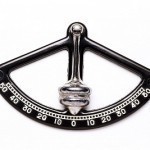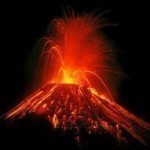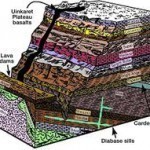Volcanoes are caused by plate tectonics. The entire world is covered in plates that move around due to high pressures underneath them. Depending on the plates, they may rub together resulting in friction or they spread apart resulting in a gap between the two plates. This results in two different types of volcanoes. There are cone-shaped volcanoes, the ones that are similar to mountains, and then there are crack volcanoes, typically only seen under water. Cone Shaped Volcanoes A cone shaped volcanoes is formed when two plates start to rub Read More
Inclinometer

An inclinometer is a device that measures both positive and negative slopes. Inclinometers are also known as tilt meters, tilt indicators, gradiometers, declinometers, clinometers, etc. They measure tilt, levelness, and angles. Most inclinometers are based on conversion formulas that allow an angle to be calculated across a specific distance. While early inclinometers were based on fluids, most modern inclinometers use digital sensors. How Inclinometers Work Early inclinometers used a device that had a flat base and an interior container of water or other fluid. Because the container was marked to Read More
The Richter Scale
When earthquake generate seismic waves that travel through the Earth’s crust, they can be recorded on seismographs. When a seismograph records these waves, a trace that shows the amplitude of the wave measurements is generated and converted to the Richter Scale measurement. Depending on the sensitivity of the device, measurements can be made for earthquakes that occur a significant distance away from the measuring device. The Richter scale does not measure the damage that an earthquake causes, just the strength of it. This is because it cannot take into account Read More
What is Soil Made Of?
Soil, together with water and air, is one of the three key natural reserves. Without soil, there would not be any form of natural vegetation or life. Soil comprises of layers of varying depth and form. The ratio of each of these components is vital in establishing the type of soil present in an area. Other factors such as climatic conditions, nearby topography, human activities and so on also determine the soil type. The basic types of soil layers are as follows: Organic matter This layer is the refuse layer Read More
How Sand is Formed
Sand is a sedimentary material; loose grains of worn out and disintegrated rocks. Sand is of fine granules with grains ranging between 0.06 and 2.0 mm in diameter. Sand is a naturally occurring fragmented material comprised of tiny particles of decomposed rocks, shells, or corals. So how does sand come about? As mentioned before, nature takes it course to form sand, but there are also unnatural ways to form sand. Naturally Occurring Sand The most common natural process of sand formation is called weathering. Majority of sand comes from chemical Read More
How a Volcano Erupts

A volcano is any opening in the Earth’s surface that allows molten rock and volcanic gases to escape from far below the Earth’s surface. Although many volcanoes are mountainous in shape, a volcano can exist in nearly any form, including volcanic vents on the ocean floor, ice volcanoes, which have been found on a variety of other planets, and volcanoes that are simply a crater in the ground. Despite the variances in the shape of volcanoes, they all erupt in relatively the same way. The process begins when the pressure Read More
How Was the Earth Formed

As science is beginning to move towards terraforming, a process that converts a “dead” planet into a thriving environment for life, the question of “How was the Earth formed?” comes to mind. Unfortunately, there is no exact answer when it comes to the formation of the Earth as no one was around back then to record it. Religion claims that God created the Earth in seven days several thousand years ago while science says that evolution, natural selection, and physics created the Earth billions of years ago. As religious claims Read More
Horizontal Drilling
Horizontal drilling is when the direction of the well is different than that of when it was initially drilled. While it does not have to be at 90 degrees to the initial hole dug, the horizontal drill bores parallel to the surface of the Earth. In recent years, it has been suggested that horizontal drilling is the best form of drilling because it saves money as well as the foot print on the world while trying to attain oil. Unlike a vertical drill where they drill directly over the oil Read More
What Are the Steps of the Rock Cycle?
The rock cycle is an essential geological model that depicts the unique changes that rock undergoes during a set time period. The three major rock types are sedimentary, metamorphic and igneous. Rocks are formed and obliterated in cycles. The rock cycle depicts the formation, destruction and restoration of rocks. These changes take place due to atmospheric changes or changes in the earth’s core structure itself. The first suggestion of the rock cycle was conceptualized by the eighteenth century geologist, James Hutton; he is considered as the father of modern geology. Read More
Radiometric Dating

Radiometric dating is a process of identifying the age of a material based on known half-lives of decaying radioactive materials found in both organic and inorganic objects. Radiometric dating is often used to determine the age of rocks, bones, and ancient artifacts. In fact, radiometric dating can be used to determine the age of the Earth, (5.54 billion years old) other planets, and celestial objects. Radiometric dating is often referred to as “radioactive dating” and “carbon dating,” though many different types of isotopes can be used to identify an object’s Read More


Share on: